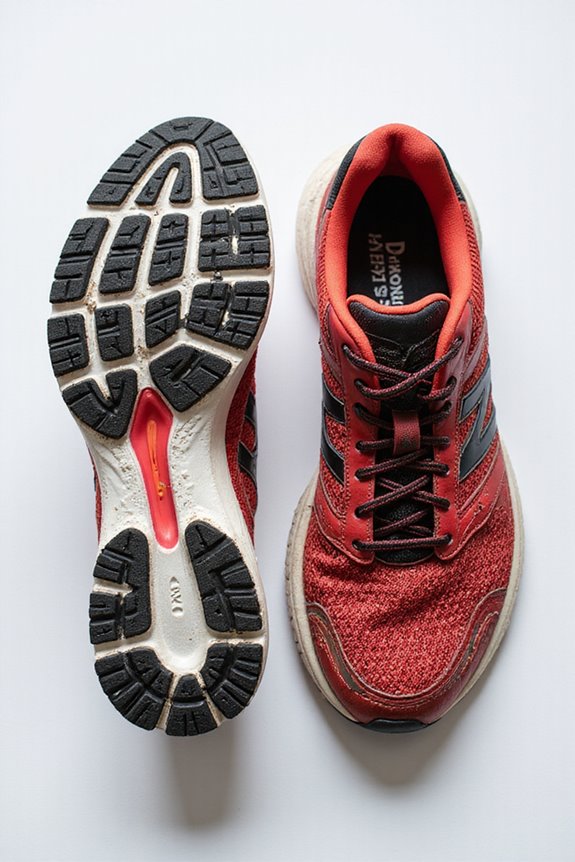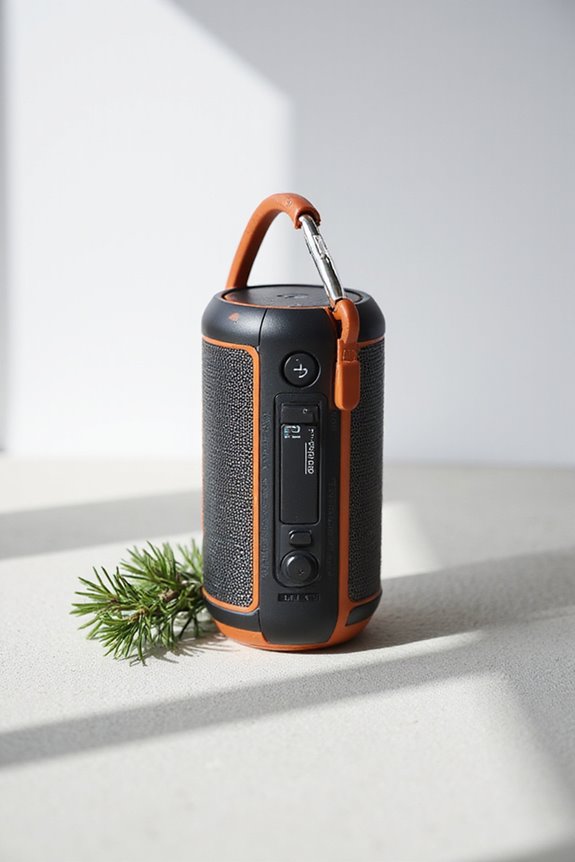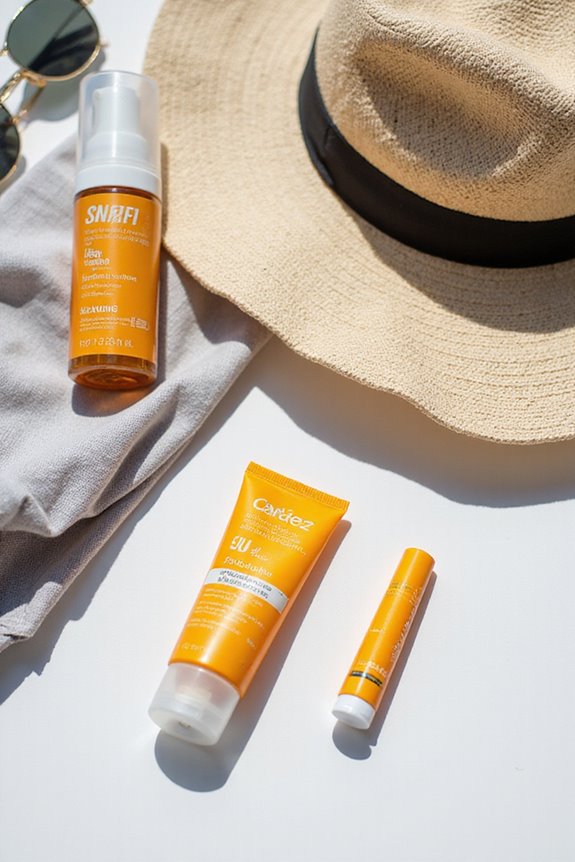Replacing running shoes is essential for comfort and injury prevention. Generally, casual runners should consider a swap every 6-8 months, while moderate runners can go for 4-6 months, and heavy runners might need new shoes every 2-4 months. It’s all about how much you put those soles to the test! Signs of wear like uneven tread or a flat feel mean it’s time for an upgrade. Stick around, there’s more important info just ahead!
Key Takeaways
- Casual runners should replace shoes every 6-8 months, while moderate runners need new shoes every 4-6 months.
- Heavy runners should consider replacing their shoes every 2-4 months due to increased wear.
- Traditional cushioning shoes typically last up to 500 miles, while minimalist shoes last around 300 miles.
- Regularly inspect shoes for signs of wear, such as uneven tread, visible cracks, or reduced cushioning.
- Rotating between multiple pairs can extend shoe lifespan and reduce injury risk by enhancing support and comfort.
Understanding Replacement Frequency Based on Usage
How often should a runner replace their shoes? The answer varies considerably based on usage and running styles. Casual runners might find themselves swapping shoes every 6-8 months, while moderate runners need a new pair every 4-6 months. Heavy runners? They’re looking at a replacement every 2-4 months. The shoe materials also play a role; minimalist shoes typically last around 300 miles, while traditional cushioning options can stretch to 500 miles. It’s crucial to track mileage and watch for signs of wear—think heel damage, worn soles, or that dreaded midsole compression. Rotating between pairs not only extends shoe life but also keeps those feet happy! After all, nobody wants to run on squished, lifeless cushioning.
Factors Influencing Shoe Lifespan

When it comes to running shoes, various factors play an essential role in determining how long a pair will last, and it’s not just about the number of miles logged. Quality shoe materials, like durable foams and robust outsoles, contribute greatly to lifespan. Brands such as Nike and Brooks are known for their craftsmanship, which enhances longevity. Running biomechanics also come into play; an individual’s stride pattern and foot strike can wear down shoes unevenly. Additionally, environmental aspects, such as running on rough terrain or extreme weather, can speed up material degradation. Even a runner’s body weight influences how pressure is distributed, leading to quicker breakdowns of cushioning. Ultimately, all these elements intertwine to determine when it’s time to replace those trusty shoes.
Identifying Signs of Wear
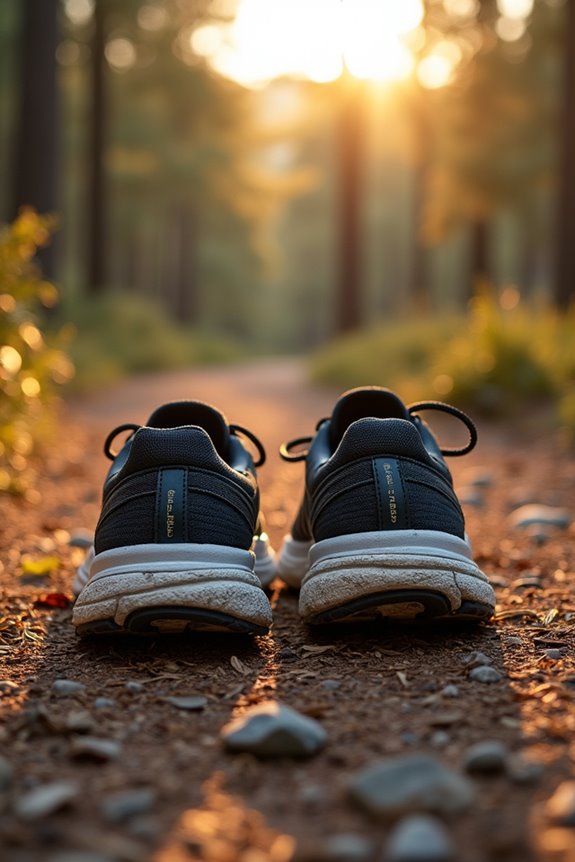
Running shoes can sometimes feel like old friends, but just like any good friendship, there comes a time when they need to be replaced. Identifying signs of wear is essential for maintaining comfort and performance. Look for wear indicators like uneven tread or visible cracks; these can signal that it’s time for an upgrade. A shoe evaluation can reveal patterns—be it medial wear from overpronation or lateral wear due to supination. If they’re feeling flat and lacking bounce, it’s a sure sign of reduced cushioning. Persistent aches or fatigue during runs? Your shoes might be throwing a silent tantrum, begging for retirement. Regular inspections can keep you running strong, ensuring you never get caught in a painful predicament.
The Importance of Rotation
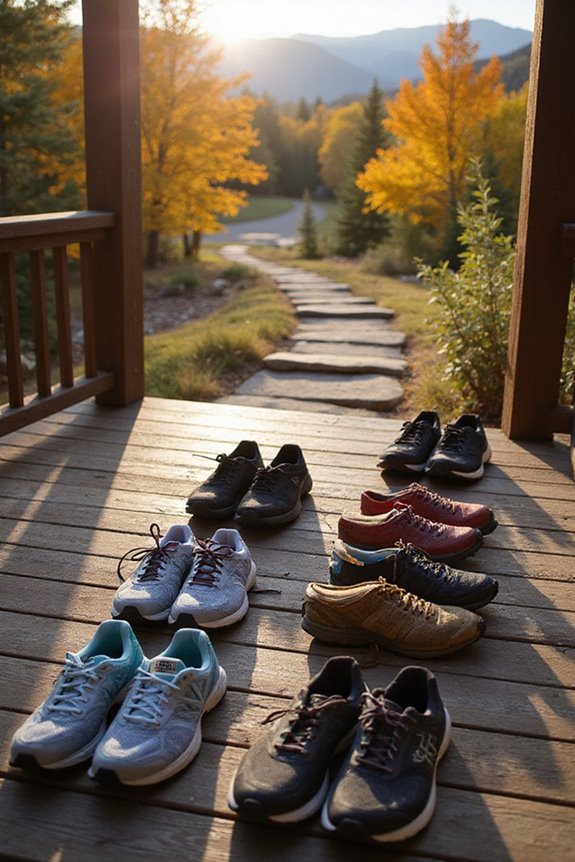
While many runners may feel a certain attachment to their favorite pair of shoes, embracing the practice of rotation can be a game changer for both performance and injury prevention. By rotating shoes, runners can reduce their injury risk by up to 39%, thanks to varied stress patterns on their feet and legs. Imagine the thrill of alternating between trail and road shoes, each providing unique support and feedback, enhancing your stride. Plus, rotating shoes keeps them fresh, extending their lifespan and ensuring peak performance. It’s like giving your feet a mini-vacation! So, whether it’s a cushioned ride or a stability boost you need, remember that shoe rotation not only supports muscle balance but also keeps those dreaded injuries at bay.
Consequences of Not Replacing Shoes
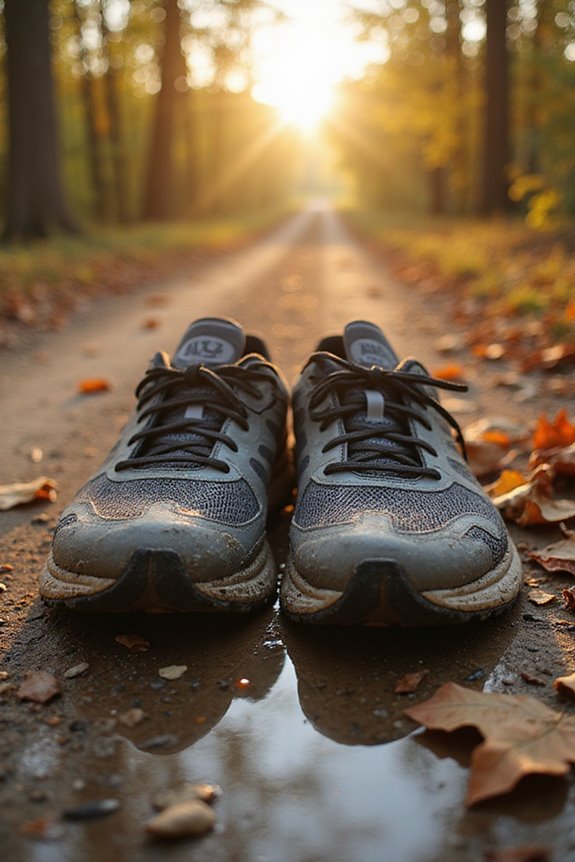
Neglecting to replace running shoes can lead to a cascade of consequences that could make any runner rethink their footwear choices. Worn-out shoes lose cushioning, increasing the risk of stress fractures and shin splints. Without proper support, runners may face painful conditions like plantar fasciitis. Imagine hitting the pavement with shoes that have flattened out—your feet will scream for relief! Plus, uneven wear can throw off your gait, inviting muscle strains and even joint pain. Not to mention, the lack of grip on slick surfaces can lead to embarrassing falls. By implementing injury prevention strategies and following shoe maintenance tips, runners can avoid these pitfalls and keep their feet happy and healthy for miles to come!
Choosing the Right Replacement
Choosing the right replacement for running shoes can feel like an intimidating task, especially when there are countless options available. Runners must consider their preferences for cushioning versus support, as well as the latest shoe technology that enhances performance. The terrain also plays an essential role; selecting shoes suited for trails or roads can make all the difference. Weight and style matter too, so finding that perfect balance is key. For the eco-conscious, sustainable options made from recycled materials or produced with eco-friendly processes are increasingly available. By thoroughly inspecting factors like midsole flexibility and outsole condition, runners can guarantee their new shoes offer the comfort and durability they need for their adventures ahead.
The Role of Mileage in Shoe Longevity
Mileage plays a pivotal role in determining how long running shoes can keep their pep. Most running shoes typically last between 300 to 500 miles, but that can vary based on factors like running style and weight. For example, heavier runners might find their shoes wearing out faster, while those pounding the pavement on trails may need replacements sooner due to increased wear. Mileage tracking is essential here, as simply dividing your weekly distance into that range can help you stay ahead. Remember, shoe cushioning starts to fade considerably after just 300 miles, which can impact comfort and performance. So, if your kicks feel flat or worn out, it’s probably time to treat your feet to a fresh pair!
Terrain and Its Impact on Shoe Lifespan
When it comes to running shoes, the terrain can make all the difference in how long they last. Trail terrain, with its rocks, roots, and mud, can wreak havoc on shoes, often pushing their lifespan to just 300 to 500 miles. This rough environment accelerates wear, especially on the outsole and midsole, making shoe durability a pressing concern. Those deep lugs meant for grip? They can wear down quickly under harsh conditions. Plus, uneven trails can lead to tears and compression. It’s like asking your shoes to run a marathon in a minefield! So, if you’re hitting the trails regularly, keep an eye on those shoes. Replace them when they start showing signs of wear, or risk slipping and sliding on your next adventure.
The Importance of Proper Fit and Comfort
While it may seem trivial, the fit of a running shoe can make or break a runner’s experience, transforming a simple jog into a delightful escape or a painful chore. Proper shoe fitting is essential; shoes should snugly hug the heel and midfoot, allowing for toe wiggle room to enhance comfort levels. Choosing the right width prevents blisters and foot pain, ensuring every run feels effortless. Annual foot measurements are a wise practice, as foot sizes can change over time. When shoes fit well, they not only improve running economy but also reduce the risk of injuries like stress fractures. Ultimately, the right fit cultivates a joyful running experience, making each step lighter and more enjoyable.
Tips for Extending the Life of Your Running Shoes
Finding the perfect fit in running shoes is just the beginning of a runner’s journey; taking care of those shoes is what truly keeps them in the game longer. To extend their life, regular shoe care is essential. Start by cleaning them often; a soft brush and damp cloth work wonders for dirt and stains. Store shoes in a cool, dry place, avoiding sun and heat to keep materials intact. Rotate pairs to allow cushioning to recover and to spread out wear. Always remove shoes gently, untying laces instead of kicking them off. Finally, keep an eye out for wear and tear—if they’re looking sad, it might be time for a replacement. With these maintenance tips, runners can enjoy their shoes longer!
Frequently Asked Questions
Can Running Shoes Be Washed, and Will It Affect Their Lifespan?
In a kingdom of sneakers, washing techniques wielded power. Gentle shoe cleaning preserved their strength, while reckless methods hastened decline. Consequently, wise runners embraced care, ensuring longevity amidst the journey’s dirt and challenges, safeguarding their trusted companions.
How Do I Store My Running Shoes to Prolong Their Life?
Proper shoe storage involves maintaining a cool, dry environment with moisture control measures. Utilizing desiccants, air circulation, and avoiding direct sunlight will help prolong the life of running shoes while preventing degradation and odor buildup.
Should I Replace Running Shoes if I Only Use Them for Walking?
While walking shoes typically have a longer lifespan than running shoes, signs of wear, discomfort, or midsole compression indicate a need for replacement. Prioritizing comfort guarantees ideal support, regardless of how they are used.
Are There Specific Brands Known for Longer-Lasting Running Shoes?
Certain brands are recognized for superior durability, leveraging advanced shoe technology. Adidas, Asics, Mizuno, Saucony, and Brooks consistently produce models with long-lasting materials, ensuring exceptional performance even after extensive use, making them leaders in brand durability.
What Is the Best Time of Year to Buy Running Shoes?
The best time to buy running shoes is during seasonal sales, particularly around mid-year, when significant online discounts occur. Shopping during these periods allows consumers to maximize savings while securing quality footwear.

